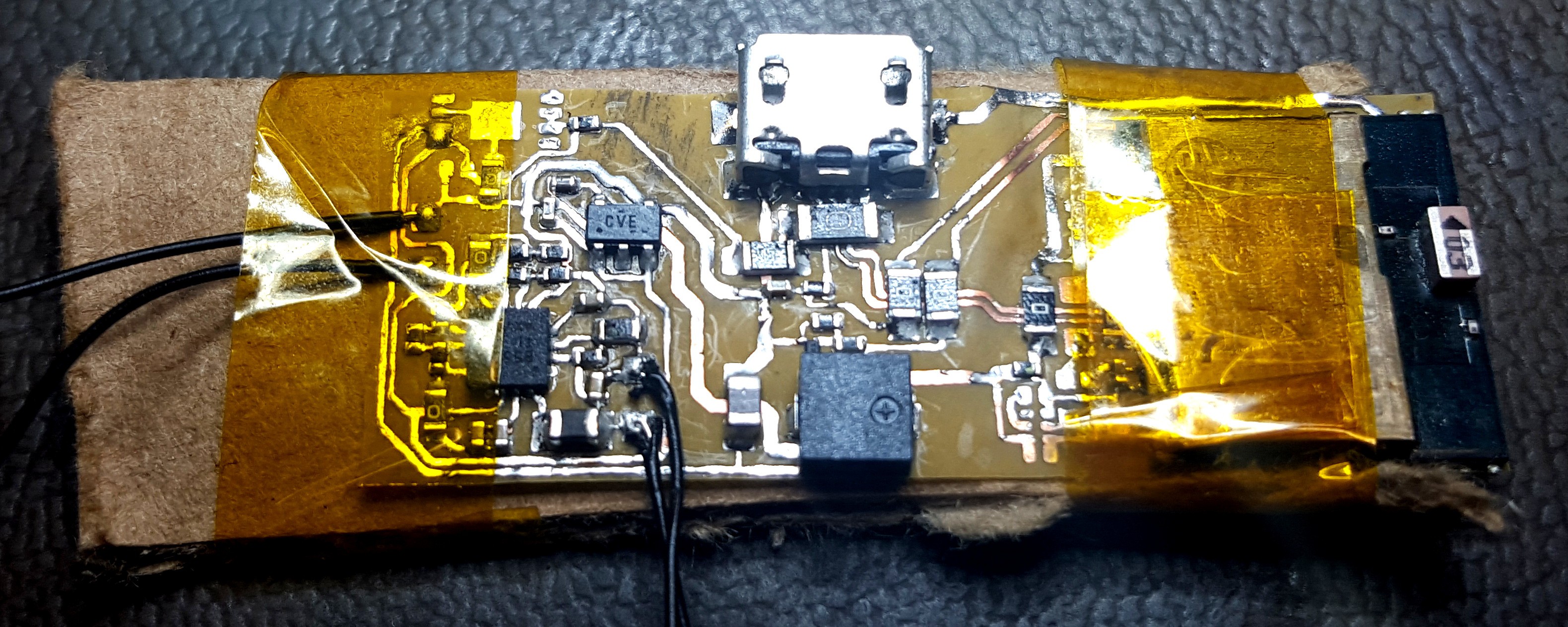I made myself a 4th copy of the revision 6 prototype after sending off the first 3 to hackaday.

Its missing the LTC4071 and battery because I've run out. I had to scavenge some of the parts from older prototypes. Now that I got paid again this week I can order more parts to finish it.
The first test I did was a comparison of current consumption between single channel advertising and all three channel advertising. I tested with the 1 second interval which I had previously recorded an average current consumption of 17.35368 uA.
33.56 uA which is about double the single channel advertisement. I has expected triple but I guess the time spent switching between active and power mode 2 is a significant amount of the power used transmitting so when you average that in with the actual time spend advertising it end up only needing 2x as much current. Knowing this I can calculate how well my idea of using a 640mS interval for a 10 second burst every 2 minutes will work out.
That's pretty close to being my goal of 10uA so I programmed it in and tested it. I ended up measuring 15 uA.
Now that I had it working with appropriate current consumption I needed to see how hard it was to connect to. The first thing I discovered was that the autoConnect feature of androids BLE API is nowhere near aggressive enough to catch it in the 10 seconds. It occasionally got it but I would have to wat 5-10 minutes! But I guess its designed to run in the background all the time so it has to be rather power conservative. When I write my Android app I'll be sure to write a foreground service that attempts to connect more aggressively. When I watched the scanner and hit connect when I first saw it I managed to get a connection every try even when I was outside on the far corner of the house with a signal strenth of 96 dBm.
These results are quite good. A purpose built device in the house would be able to monitor BLE and alert you by text message if it missed 2 burst periods and should be quite reliable. And scanning with the phone anywhere in the house should always find that cat within 2 minutes. This coupled with the fact that we can run on only 15 uA means we have a workable solar powered BLE tracker! I'm going to print the first prototype case tonight so expect info on that tommorow.
 DrYerzinia
DrYerzinia
Discussions
Become a Hackaday.io Member
Create an account to leave a comment. Already have an account? Log In.